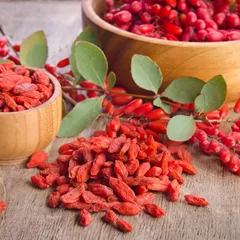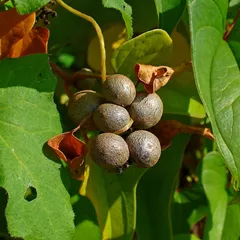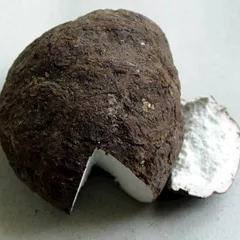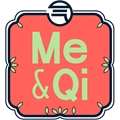Huan Shao Dan
Chinese: 还少丹
Pinyin: Hái Shǎo Dān
Other names: Rejuvenation Special Pill, Return to Youth Pill, Pill for Restoring Yang, Lycium Formula, Youth return formula








Huan Shao Dan
Chinese: 还少丹
Pinyin: Hái Shǎo Dān
Other names: Rejuvenation Special Pill, Return to Youth Pill, Pill for Restoring Yang, Lycium Formula, Youth return formula
Ingredients: 15 herbs
Category: Formulas that tonify Yin and Yang
- Tonifies the Spleen, Heart and Kidneys
- Nourishes Yin and Blood
- Augments Qi
- Tonifies Yang
- Promotes Longevity
Contraindications: Contraindicated during pregnancy.
Source: Hong's Collection of Experiential Formulas (1170 AD)
The information provided here is not a replacement for a doctor. You shouldn't use it for the purpose of self-diagnosing or self-medicating but rather so you can have a more informed discussion with a professional TCM practitioner.
Huan Shao Dan is a 15-ingredient Chinese Medicine formula with Prepared Rehmannia (Shu Di huang) and Goji Berries (Gou Qi Zi) as principal ingredients.
Invented in 1170 AD, it belongs to the category of formulas that tonify Yin and Yang. Its main actions are: 1) tonifies the Spleen, Heart and Kidneys and 2) nourishes Yin and Blood.
In Chinese Medicine health conditions are thought to arise due to "disharmonies" in the body as a system. These disharmonies are called "patterns" and the very purpose of herbal formulas is to fight them in order to restore the body's harmony.
In this case Huan Shao Dan is used by TCM practitioners to fight patterns like Kidney Essence Deficiency, Kidney and Spleen Yang Deficiency or Kidney and Spleen Yang Deficiency with Empty Cold. From a Western Medicine standpoint, such patterns can give rise to a range of conditions such as spermatorrhea, impotence or aldosteronism for instance.
On this page, after a detailed description of each of the fifteen ingredients in Huan Shao Dan, we review the patterns and conditions that Huan Shao Dan helps treat.
The fifteen ingredients in Huan Shao Dan

Shu Di huang is a king ingredient in Huan Shao Dan. Like the name indicates, it means it has more power than other ingredients in the formula.
1. Prepared Rehmannia (Shu Di huang)
Part used: Prepared dried root tuber
Nature: Warm
Taste(s): Sweet
Meridian affinity: KidneyLiver
Category: Tonic herbs for Blood Deficiency
In general Shu Di huang's main actions are as follows: "Tonifies the Blood. Tonifies the Yin of the Kidneys."
In the context of Huan Shao Dan, it is used because it nourishes and replenishes Essence and marrow, as well as nourishes the Blood and moisten the Yin.

Gou Qi Zi is a king ingredient in Huan Shao Dan. Like the name indicates, it means it has more power than other ingredients in the formula.
2. Goji Berries (Gou Qi Zi)
Part used: Dried ripe fruit
Nature: Neutral
Taste(s): Sweet
Meridian affinity: KidneyLiver
Category: Tonic herbs for Yin Deficiency
In general Gou Qi Zi's main actions are as follows: "Tonifies the Yin of the Liver and Yin of the Kidneys. Brightens the eyes. Moistens the Lungs."
In the context of Huan Shao Dan, it is used because it nourishes and replenishes Essence and marrow, as well as nourishes the Blood and moisten the Yin.

Ba Ji Tian is a deputy ingredient in Huan Shao Dan. This means it helps the king ingredient(s) treat the main pattern or it serves to treat a coexisting pattern.
3. Morinda Roots (Ba Ji Tian)
Part used: Dried root
Nature: Warm
Meridian affinity: KidneyLiver
Category: Tonic herbs for Yang Deficiency
In general Ba Ji Tian's main actions are as follows: "Tonifies the Kidney Yang. Expels Wind-Damp-Cold painful obstruction (Bi Pain)."
In the context of Huan Shao Dan, it is used because it warms the Kidneys and support Yang energy. It also enhances the Essence and Blood.

Rou Cong Rong is a deputy ingredient in Huan Shao Dan. This means it helps the king ingredient(s) treat the main pattern or it serves to treat a coexisting pattern.
4. Desert-Living Cistanches (Rou Cong Rong)
Part used: Dried stem
Nature: Warm
Meridian affinity: KidneyLarge intestine
Category: Tonic herbs for Yang Deficiency
In general Rou Cong Rong's main actions are as follows: "Tonifies Kidney Yang, Restores Essence and Blood. Induces laxation."
In the context of Huan Shao Dan, it is used because it warms the Kidneys and support Yang energy. It also enhances the Essence and Blood.

Xiao Hui Xiang is a deputy ingredient in Huan Shao Dan. This means it helps the king ingredient(s) treat the main pattern or it serves to treat a coexisting pattern.
5. Fennel Seeds (Xiao Hui Xiang)
Part used: Dried ripe fruits
Nature: Warm
Taste(s): Pungent
In general Xiao Hui Xiang's main actions are as follows: "Expels Cold and relieves pain. Regulates Qi of the Stomach."
In the context of Huan Shao Dan, it is used because it warms the Kidneys and support Yang energy. It also enhances the Essence and Blood.

Shan Zhu Yu is a deputy ingredient in Huan Shao Dan. This means it helps the king ingredient(s) treat the main pattern or it serves to treat a coexisting pattern.
6. Cornelian Cherries (Shan Zhu Yu)
Part used: Dried ripe sarcocarp
Nature: Warm
Taste(s): Sour
Meridian affinity: KidneyLiver
Category: Herbs that stabilize and bind
In general Shan Zhu Yu's main actions are as follows: "Preserves and tonifies the Kidney, Liver and Essence. Stops sweating and benefits the Yang and Qi. Assists menstruation and stops bleeding."
In the context of Huan Shao Dan, it is used because it strengthens the Liver and Kidneys as well as fortifies the tendons and bones.

Wu Wei Zi is a deputy ingredient in Huan Shao Dan. This means it helps the king ingredient(s) treat the main pattern or it serves to treat a coexisting pattern.
7. Schisandra Berries (Wu Wei Zi)
Part used: Dried ripe fruits
Nature: Warm
Meridian affinity: HeartKidneyLung
Category: Herbs that stabilize and bind
In general Wu Wei Zi's main actions are as follows: "Tonifies the Kidneys and preserves the Essence. Astringes the Lung Qi and stops coughing. Retains Bodily Fluids and encourages their production. Tonifies the Heart and calms the spirit (Shen)."
In the context of Huan Shao Dan, it is used because it strengthens the Liver and Kidneys as well as fortifies the tendons and bones.

Chu Shi Zi is a deputy ingredient in Huan Shao Dan. This means it helps the king ingredient(s) treat the main pattern or it serves to treat a coexisting pattern.
8. Paper Mulberry Fruits (Chu Shi Zi)
Part used: Fruits
Nature: Cold
Taste(s): Sweet
Meridian affinity: KidneyLiver
Category: Tonic herbs for Yin Deficiency
In general Chu Shi Zi's main actions are as follows: "Nourishes the Kidney and Liver Yin, Augments the Kidney Qi, Clears the Liver and Brightens the eyes, Promote urination "
In the context of Huan Shao Dan, it is used because it strengthens the Liver and Kidneys as well as fortifies the tendons and bones.

Chuan Niu Xi is a deputy ingredient in Huan Shao Dan. This means it helps the king ingredient(s) treat the main pattern or it serves to treat a coexisting pattern.
9. Cyathula Roots (Chuan Niu Xi)
Part used: Dried root
Nature: Neutral
Meridian affinity: KidneyLiver
Category: Herbs that invigorate the Blood
In general Chuan Niu Xi's main actions are as follows: "Removes Blood Stagnation and unblocks menstruation. Improve joint pain. Promotes urination and treats dysuria."
In the context of Huan Shao Dan, it is used because it strengthens the Liver and Kidneys as well as fortifies the tendons and bones.

Du Zhong is a deputy ingredient in Huan Shao Dan. This means it helps the king ingredient(s) treat the main pattern or it serves to treat a coexisting pattern.
10. Eucommia Bark (Du Zhong)
Part used: Dried stem bark
Nature: Warm
Taste(s): Sweet
Meridian affinity: KidneyLiver
Category: Tonic herbs for Yang Deficiency
In general Du Zhong's main actions are as follows: "Tonifies the Liver and Kidneys. Calms ascendant Liver Yang (hypertension/high blood pressure). Calms a restless fetus."
In the context of Huan Shao Dan, it is used because it strengthens the Liver and Kidneys as well as fortifies the tendons and bones.

Shan Yao is an assistant ingredient in Huan Shao Dan. This means that it either serves to reinforces the effect of other ingredients or it moderates their toxicity.
11. Yam (Shan Yao)
Part used: Dried rhizome
Nature: Neutral
Taste(s): Sweet
Meridian affinity: KidneyLungSpleen
Category: Tonic herbs for Qi Deficiency
In general Shan Yao's main actions are as follows: "Tonifies the Spleen and Stomach. Tonifies the Lung Qi and nourishes the Lung Yin. Nourishes the Kidneys and consolidates Jing."
In the context of Huan Shao Dan, it is used because it tonifies the Qi and strengthens the Spleen to enhance the transformation of nutrients.

Fu Ling is an assistant ingredient in Huan Shao Dan. This means that it either serves to reinforces the effect of other ingredients or it moderates their toxicity.
12. Poria-Cocos Mushrooms (Fu Ling)
Part used: Dried sclerotium
Nature: Neutral
Taste(s): Sweet
Meridian affinity: HeartKidneyLungSpleen
Category: Herbs that drain Dampness
In general Fu Ling's main actions are as follows: "Encourages urination and drains Dampness. Tonic to the Spleen/Stomach. Assists the Heart and calms the Spirit."
In the context of Huan Shao Dan, it is used because it tonifies the Qi and strengthens the Spleen to enhance the transformation of nutrients.

Da Zao is an assistant ingredient in Huan Shao Dan. This means that it either serves to reinforces the effect of other ingredients or it moderates their toxicity.
13. Jujube Dates (Da Zao)
Part used: Dried ripe fruit
Nature: Warm
Taste(s): Sweet
Meridian affinity: SpleenStomach
Category: Tonic herbs for Qi Deficiency
In general Da Zao's main actions are as follows: "Tonifies the Spleen and Stomach Qi. Tonifies the Blood. Calms the Shen (spirit). Moderates the actions of other herbs in formula."
In the context of Huan Shao Dan, it is used because it tonifies the Qi and strengthens the Spleen to enhance the transformation of nutrients.

Shi Chang Pu is an assistant ingredient in Huan Shao Dan. This means that it either serves to reinforces the effect of other ingredients or it moderates their toxicity.
14. Sweetflag Rhizomes (Shi Chang Pu)
Part used: Dried rhizome
Nature: Warm
Taste(s): Bitter
Meridian affinity: StomachHeartLiver
Category: Herbs that open the Orifices
In general Shi Chang Pu's main actions are as follows: "Opens the Orifices, awakens the Mind (Shen) and expels Wind-Damp Phlegm. Harmonizes the Earth element and dispels Damp. Applied internally or externally for Wind-Cold-Damp painful obstruction."
In the context of Huan Shao Dan, it is used because it

Yuan Zhi is an assistant ingredient in Huan Shao Dan. This means that it either serves to reinforces the effect of other ingredients or it moderates their toxicity.
15. Chinese Senega Roots (Yuan Zhi)
In general Yuan Zhi's main actions are as follows: "Calms the spirit. Expels Phlegm from the Heart orifices. Expels Phlegm from the Lungs. Diminishes abscesses."
In the context of Huan Shao Dan, it is used because it connect thes Heart and Kidneys as well as harmonizes water and Fire of the body.
Conditions and patterns for which Huan Shao Dan may be prescribed
It's important to remember that herbal formulas are meant to treat patterns, not "diseases" as understood in Western Medicine. According to Chinese Medicine patterns, which are disruptions to the body as a system, are the underlying root cause for diseases and conditions.
As such Huan Shao Dan is used by TCM practitioners to treat three different patterns which we describe below.
But before we delve into these patterns here is an overview of the Western conditions they're commonly associated with:
Spermatorrhea Impotence Aldosteronism Hypothyroidism Prostatitis Forgetfulness Dysmenorrhea Enuresis Menopause syndrome Aphasia Metrorrhagia Decreased libido Premature aging Diabetes mellitus Chronic nephritis Renal tuberculosis Anorexia Vaginal discharge Amenorrhea Edema Infertility Obesity
Again it wouldn't be correct to say "Huan Shao Dan treats spermatorrhea" for instance. Rather, Huan Shao Dan is used to treat patterns that are sometimes the root cause behind spermatorrhea.
Now let's look at the three patterns commonly treated with Huan Shao Dan.

The Kidneys is a so-called "Zang" Organ. Learn more about the Kidneys in Chinese Medicine
Kidney Essence Deficiency
Pulse type(s): Empty (Xu), Floating (Fu)
Tongue coating: Complete absence of coating
Tongue color: Pale
Symptoms: Deafness Tinnitus Hair loss Sterility Dizziness Sore back Weak Limbs Retardation Infertility Poor memory Loose teeth Hair Graying Blurred vision Absentmindness Mental dullness Lower back pain Premature aging Softening of bones Primary amenorrhoea Poor sexual ability Poor bone development Decreased mental sharpness Late closure of fontanelle Loss of hearing or deafness
Huan Shao Dan is sometimes prescribed by TCM practitioners to treat Kidney Essence Deficiency. This pattern leads to symptoms such as deafness, mental dullness, retardation and softening of bones. Patients with Kidney Essence Deficiency typically exhibit empty (Xu) or floating (Fu) pulses as well as Red and peeled tongue .
Kidney Essence (Jing 精) Deficiency usually involves Deficiency of Kidney Yin and, to some extent, Kidney Yang. Its signs manifest in relation to growth, development, reproduction, sexuality, bones, marrow, the brain, teeth, memory and hair.
Poor hereditary constitution in children, aging, excessive... read more about Kidney Essence Deficiency

The Spleen is a so-called "Zang" Organ. Learn more about the Spleen in Chinese Medicine
Kidney and Spleen Yang Deficiency
Pulse type(s): Deep (Chen), Weak (Ruo)
Symptoms: Apathy Diarrhea Weak legs Impotence Tiredness Lassitude Depression Loose stools Poor appetite Loss of libido Oedema of legs Lower back pain Feeling of cold Low sperm count Clear urination Urination at night Desire to lie down Cold and weak knees Cold and thin sperm Infertility in women Premature ejaculation Bright-white complexion Slight abdominal distention Sensation of cold in the back
Huan Shao Dan is sometimes prescribed by TCM practitioners to treat Kidney and Spleen Yang Deficiency. This pattern leads to symptoms such as lower back pain, cold and weak knees, sensation of cold in the back and feeling of cold. Patients with Kidney and Spleen Yang Deficiency typically exhibit deep (Chen) or weak (Ruo) pulses.
The Spleen is the Organ that provides the material basis for our acquired constitution (Post-Heaven Essence), while the Kidneys provide the inherited constitution (Pre-Heaven Essence).
A Kidney Yang Deficiency contributes to a depletion of Spleen Yang and vice versa. This pattern results when... read more about Kidney and Spleen Yang Deficiency

The Spleen is a so-called "Zang" Organ. Learn more about the Spleen in Chinese Medicine
Kidney and Spleen Yang Deficiency with Empty Cold
Pulse type(s): Slow (Chi), Weak (Ruo)
Tongue color: Pale
Symptoms: Pus in stool Dark blood in stool Chronic dysenteric disorder abdominal pain relieved by presure and warmth
Huan Shao Dan is sometimes prescribed by TCM practitioners to treat Kidney and Spleen Yang Deficiency with Empty Cold. This pattern leads to symptoms such as chronic dysenteric disorder, dark blood in stool, pus in stool and abdominal pain relieved by presure and warmth. Patients with Kidney and Spleen Yang Deficiency with Empty Cold typically exhibit slow (Chi) or weak (Ruo) pulses as well as a pale tongue.
This pattern typically evolves from an initial Damp-Heat dysenteric disorder, leading to a gradual weakening of the Spleen and Stomach. Over time, this progresses into a Cold Deficiency state, marked by the inability of the Middle Burner (Spleen and Stomach) to digest, transform, or transport food,... read more about Kidney and Spleen Yang Deficiency with Empty Cold
Formulas similar to Huan Shao Dan
Zan Yu Dan is 40% similar to Huan Shao Dan
You Gui Wan is 33% similar to Huan Shao Dan
Qi Ju Di Huang Wan is 33% similar to Huan Shao Dan
Ren Shen Yang Rong Tang is 33% similar to Huan Shao Dan
Da Bu Yuan Jian is 33% similar to Huan Shao Dan
Zuo Gui Yin is 33% similar to Huan Shao Dan











